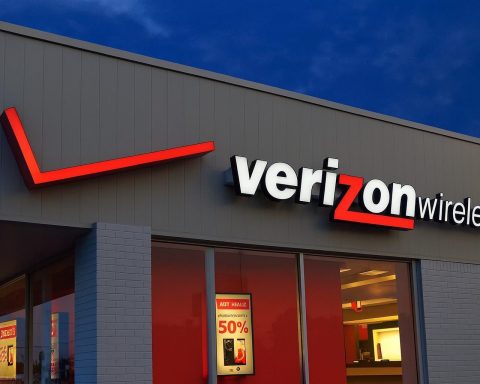- Stalemate in Congress. Republicans control the House and Senate, but lack the 60-vote supermajority to end a filibuster. Democrats say they will not fund a continuing resolution (CR) unless expensive COVID-era health insurance subsidies are preserved [1]. As a result, the federal government entered a partial shutdown (now in its second week), with no “deal” in sight [2] [3].
- Troop-pay promise. On Oct. 11, President Trump announced he is using his authority as commander-in-chief to ensure active-duty service members will be paid their Oct. 15 salaries despite the shutdown. In a Truth Social post he wrote, “I am using my authority … to direct our Secretary of War, Pete Hegseth, to use all available funds to get our Troops PAID on October 15th,” adding “We have identified funds to do this” [4].
- Funding the payroll. The White House budget office says the money to pay the troops will come from within the Pentagon’s budgets – specifically by repurposing research and development accounts [5]. In other words, funds already appropriated (for R&D) would be shifted to troop salaries. House Democrats point out that if even one day’s paycheck is missed it would be the first time in U.S. history that all active-duty service members go unpaid – 1.3 million people in total [6].
- Furloughs and firings. Roughly 750,000 federal civilian employees are furloughed (working without pay) during the shutdown [7]. Meanwhile, the White House has launched an unprecedented layoff campaign: court filings reveal that over 4,000 federal workers across at least seven agencies (Education, HHS, Treasury, HUD, DHS, EPA, etc.) will receive reduction-in-force notices this week [8] [9]. In his Sept. 30 schedule, OMB Director Russ Vought warned agencies to prepare “to reduce” staff if the shutdown drags on.
- No guaranteed back-pay for others. The administration has signaled it will not guarantee automatic back pay for furloughed employees (normally provided by law). Trump’s OMB recently argued that shut-down workers “were not entitled to back pay” [10], a stance at odds with the 2019 law guaranteeing back pay after shutdowns. Federal unions are furious and have sued to stop the firings. The American Federation of Government Employees (AFGE) calls the plan “illegal” and “disgraceful,” warning that the layoffs violate longstanding federal shutdown rules [11] [12].
- Congressional wrangling. Both parties have demanded some legislative action. In the House, Democrats (and even a few Republicans) repeatedly pushed for a standalone vote on a “Pay Our Troops” bill that would ensure military paychecks — but GOP leaders blocked it in pro forma sessions [13]. Republicans respond that they already passed a “clean” CR three weeks ago to fund government (which would cover the military); they say Senate Democrats have repeatedly refused to pass it. As House Speaker Mike Johnson put it, Senate Democrats “have voted seven times to block paychecks for 1.3 million active-duty military men and women” [14]. Neither chamber is taking up the separate Dem proposal while the shutdown continues.
- Impact on services and citizens. Essential services are already straining. For example, thousands of flights were delayed or canceled this week as FAA controllers call out or work without pay [15]. Military families are anxious: Coast Guard members (under Homeland Security) won’t get these special payments, meaning they could miss checks as happened in the 2019 shutdown [16]. Community food pantries report more traffic from federal workers scrambling to pay bills.
Political Blame and Messaging
Each side blames the other. President Trump accuses Democrats of holding the military “HOSTAGE with their dangerous Government shutdown,” and vows “we will not allow” the troops to go unpaid [17]. Senate Minority Leader Chuck Schumer retorts that Republicans are the ones “feeling the heat” for causing the shutdown [18]. Near the Capitol, union leader Randy Erwin (National Fed. of Fed. Employees) put it plainly: “Congress, do your damn job,” he told reporters [19]. Democrats accuse House Republicans of unnecessarily dragging out the funding stalemate, while Republicans say Senate Democrats refuse to fund the government without new policy demands. In the clash of narratives, one veteran GOP lawmaker held up the Dem pay bill and said “all they have to do is pick it up… give us five votes and the military gets paid,” suggesting a fix is simple if Democrats would cooperate [20].
Legal and Historical Context
Experts say Trump’s firing plan is unprecedented and legally risky. Law professor Nick Bednar (Univ. of Minnesota) notes that “we are in largely uncharted territory” [21], since no previous president has ever used a government shutdown as a rationale to cut civilian staff [22]. Under the Antideficiency Act of 1884, new spending is barred during a lapse in appropriations. Usually, that means agencies can furlough employees but not permanently cut them. By contrast, the White House argues it has the authority to hold “reductions in force” due to “insufficient funds” [23]. However, critics point out that planning and executing mass layoffs during a shutdown likely violates the Act, which only allows spending to “preserve life or property,” and even says agencies must follow strict procedures before firing employees. One appropriations law scholar warned that officials approving unlawful cuts “could face felony liability” under the Antideficiency Act [24]. For now, courts in San Francisco are weighing a union request for an injunction to halt the planned firings [25] [26].
By contrast, paying the military during a shutdown has precedent. In 2013, Congress passed emergency legislation to cover troops and other essential staff. This week, dozens of Democrats (and some bipartisan sponsors) urged Speaker Johnson to bring up a similar “Pay Our Troops” proposal [27], but he has refused, saying none was needed. The GOP’s ostensible solution is for all lawmakers to support the existing continuing resolution (passed by the House) so that government – and military pay – resumes.
In the Words of Observers
- Experts on law: “There are some legal questions about that that are unresolved,” Sen. Gary Peters (D-Mich.) commented on the firings, underscoring the unprecedented nature of the plan [28]. As Bednar put it, uncertainty reigns: it’s a test of how the shutdown law is interpreted [29] [30].
- Unions and Democrats: AFGE President Everett Kelley denounced the layoffs as a “disgraceful” exploitation of the shutdown to “illegally fire thousands of workers” [31]. On the Hill, House Democrats framed the debate as a moral one: Rep. Maxine Waters said it’s shameful to use “public servants and military families as political pawns” during a shutdown [32].
- Republicans and Administration: White House Press Secretary Karoline Leavitt defended the firings as necessary to “cut back to save money in a responsible way” during this “financial crunch” [33]. Senate Majority Leader John Thune (R-S.D.) echoed the “pick up the bill” message on troop pay [34]. Speaker Johnson reiterated that ending the shutdown is in the hands of Democrats, urging them to take the votes needed to fund government and pay “our troops and TSA agents and air traffic controllers” [35].
What It Means
If the shutdown continues, thousands of federal employees will see their jobs and paychecks in limbo. Even service members may temporarily go unpaid if Congress doesn’t act – a scenario that has never happened. The standoff also highlights how modern shutdown politics intersect with President Trump’s aggressive approach. As commentators note, unlike the 2019 shutdown (over border-wall funding), this fight is primarily within Congress, with Trump largely playing the role of arbiter/pressurer [36]. But with the government offline and funds drying up, the human costs mount: families face unpaid bills and communities lose services. Whether through negotiation or court orders, one thing is clear: this shutdown will end only when someone finally “gives up five votes,” in Thune’s words [37].
Sources: Latest reporting from Reuters, Washington Post, AP News, Roll Call, Fox News, and other outlets covering the Oct. 2025 government shutdown, including statements from President Trump and Congressional leaders [38] [39] [40] [41]. All facts are attributed.
References
1. www.washingtonpost.com, 2. www.washingtonpost.com, 3. federalnewsnetwork.com, 4. www.reuters.com, 5. www.washingtonpost.com, 6. democrats-financialservices.house.gov, 7. www.washingtonpost.com, 8. apnews.com, 9. rollcall.com, 10. www.washingtonpost.com, 11. apnews.com, 12. apnews.com, 13. www.foxnews.com, 14. www.foxnews.com, 15. www.govexec.com, 16. www.washingtonpost.com, 17. www.reuters.com, 18. federalnewsnetwork.com, 19. federalnewsnetwork.com, 20. www.washingtonpost.com, 21. www.reuters.com, 22. www.reuters.com, 23. www.reuters.com, 24. www.reuters.com, 25. apnews.com, 26. apnews.com, 27. www.govexec.com, 28. www.reuters.com, 29. www.reuters.com, 30. www.reuters.com, 31. apnews.com, 32. democrats-financialservices.house.gov, 33. www.reuters.com, 34. www.washingtonpost.com, 35. www.foxnews.com, 36. www.foxnews.com, 37. www.washingtonpost.com, 38. www.reuters.com, 39. www.washingtonpost.com, 40. apnews.com, 41. www.foxnews.com










